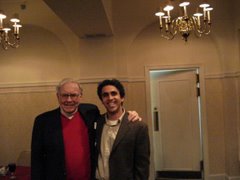"Investors should remember that excitement and expenses are their enemies. And if they insist on trying to time their participation in equities, they should try to be fearful when others are greedy and greedy when others are fearful." - Warren Buffett
Security Analysis was published over 70 years ago. To this day, the teachings of Ben Graham and David Dodd hold truer than ever. Graham used to love buying his famous “net-net” stocks, companies that were selling for less than the value of their current assets minus all liabilities. As more entrants came into the markets, these types of opportunities all but vanished. Nonetheless, the enterprising investor applying some serious effort can still uncover some gravely mis-priced securities.
Graham and Dodd’s core concept was to apply analytical effort in examining securities and purchase those selling below their intrinsic worth. The behavior of market participants over the long-term is quite predictable and if you follow the above advice from Buffett, you will do better than most investors. Buffett holds one of the best long term investment records ever, compounding money at over 20% for 40 years. Buffett made his money by exploiting market opportunities where there is a high degree of fear or pessimism.
Welcome Bear Markets
Bear present the most common market environment in which to locate temporarily mis-priced securities. In 1974, after a bull market spanning nearly two decades, the markets fell hard. Overcome by fear most people missed out on one of the century’s best buying opportunities. It was around this time that Buffett began scooping up shares in the Washington Post and Buffett's $10 million investment back then is worth over a billion today. Again in 2003, securities again were cheap, but everyone was afraid even though gap between value and price was wider than it had been in a decade. Investors who are overcome by emotion always disregard market fundamentals leading to the purchase of securities when one should be selling and vice versa.
The year 1987 presents a classic example of the folly demonstrated by most market participants. The year began with surge in share prices for about eight months and was followed by the crash in the October. Bill Ruane and Richard Cuniff of the hugely successful Sequoia Fund remarked,
”Disregarding for the moment whether the prevailing level of stock prices on January 1, 1987 was logical, we are certain that the value of American industry in the aggregate had not increased by 44% as of August 25. Similarly, it is highly unlikely that the value of American industry declined by 23% on a single day, October 19.”
October 20, 1987 would later represent one the best buying opportunities for stock investors.
Investing is "simple but not easy." The idea is simple: simply buy when Mr. Market is acting irrational, but not easy in that most people do the opposite of what they are supposed to be doing: buying on the way up and selling on the way down.
Friday, October 26, 2007
Subscribe to:
Post Comments (Atom)


No comments:
Post a Comment